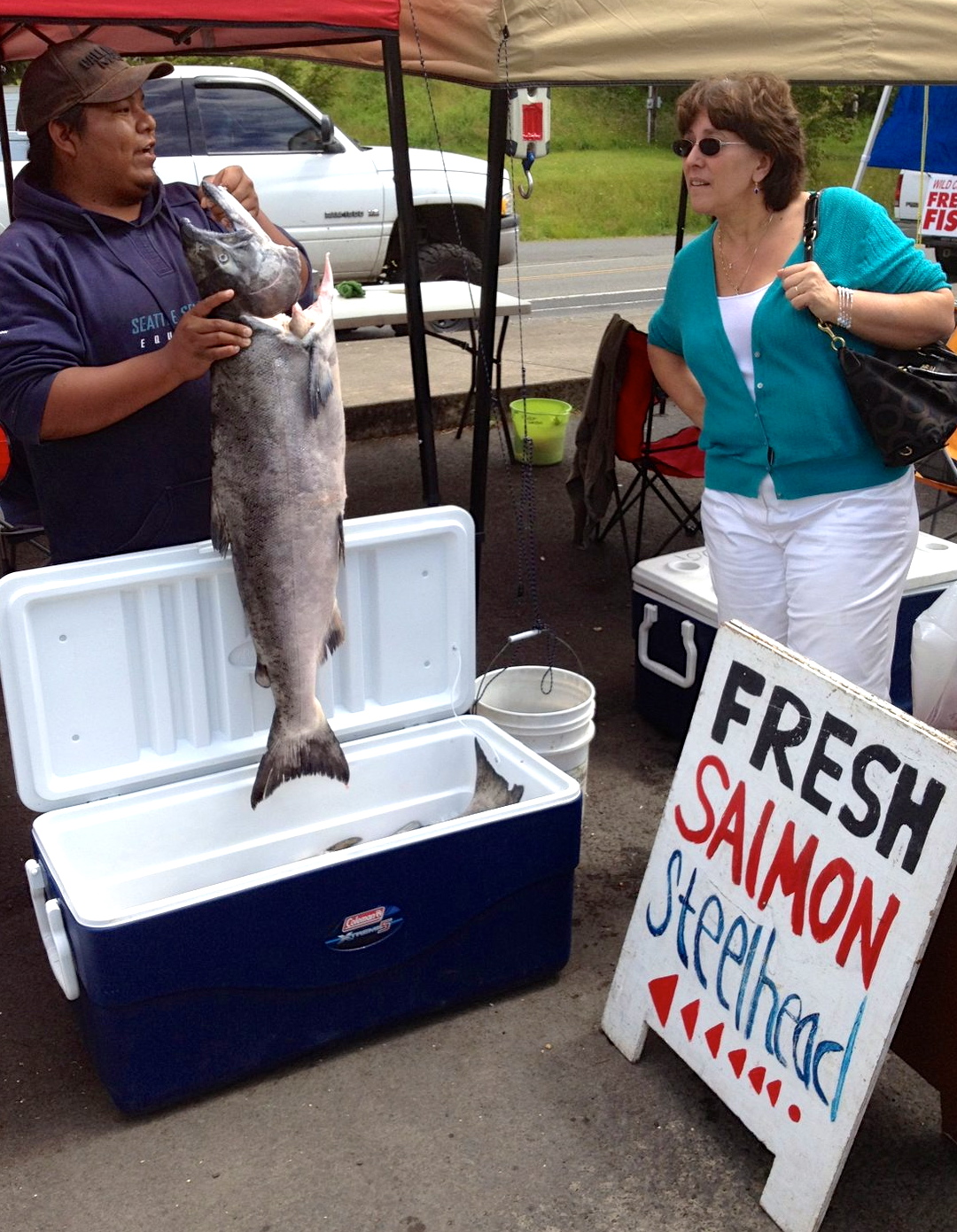Community Development Recommendation 1
Salmon Marketing
Issue
Helping the tribal fishing community increase the economic value of its commercial treaty fisheries is an important goal of CRITFC’s member tribes.
CRITFC’s Salmon Marketing Program has had a big impact. Prices paid to tribal fishers for fresh fish have risen from $1.00 or less per pound two decades ago to as much as $10.00 or more per pound for fresh fillets, depending on the species and time of year. Both direct-to-the-public and wholesaler buyer prices have increased. Still much more can be done.
Currently, most of the fishers are limited to selling whole fish, keeping them at the lower end of the marketing channel. With new generations of tribal members entering the fishery every year, an effective program of on-going training and the development of value-added products are essential to continued success. These are but a couple of the challenges ahead.
More information about salmon marketing, its cultural roots, and about opportunities to benefit from direct sales to the public is available here»
Actions Needed
- Integrate the CRITFC marketing program with Tribal FishCo LLC, the newly created fish processing plant at East White Salmon, Washington. (See Community Development Recommendation Tribal FishCo, LLC.)
- Promote a local, regional, national and international “branding” campaign for Columbia River Indian-caught salmon.
- Research economic multiplier effect to determine the tribal fishing community’s contribution to local economies.
- Assist fishers in modernizing the fishery with access to newer and safer boats, engines and other equipment.
- Help establish a boat and engine maintenance facility staffed by tribal specialist and mechanics.
- Expand current initiatives for fisher and consumer education, marketing, product safety and diversification, fisher safety on the river and other projects.
Desired Outcome
Through higher prices paid for tribally caught fish, tribal fishers have increased income for boats, repairs, fuel, nets, and basic living expenses (e.g., rent, food and gas) that allows them to carry on their traditional livelihood. By having the necessary capital to continue fishing, the fishers are able to teach the younger generations how to fish and about the importance of fishing to tribal culture and communities.
Tribal fishing on the Columbia River is safer because of enhanced fisher education, better fishing safety practices, and safer boats and other equipment.
Local communities understand the important economic contribution of the treaty fishery and restored fish runs.






